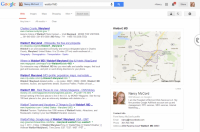
Just this last week I joined the ranks of Google’s local reviewers. Google has quietly put the word out that it wants to enlist its own approved writers to start building reviews on local businesses. Google calls their program “Local Guides”.
You too can apply to be a writer. I am not sure what their criteria is to be approved, but as I am already reviewing local businesses and write regularly for many venues, I was approved the same day.
Here are the perks you’ll get based on the amount of reviews you write. There is no money involved, just bragging rights, really.
That being said, what is interesting is to identify is that Google considers reviews done by real people to be important. So important that it is enticing a wide variety of individuals to beef up the number of business reviews in the Google Places arena by creating a special program complete with enticements for 5, 50, and 200 review levels.
If you need help with reviews for your own business and you are not getting the action you need from Google’s Local Guides I invite you to review our Brand Booster program to help build online reviews and web visibility.



